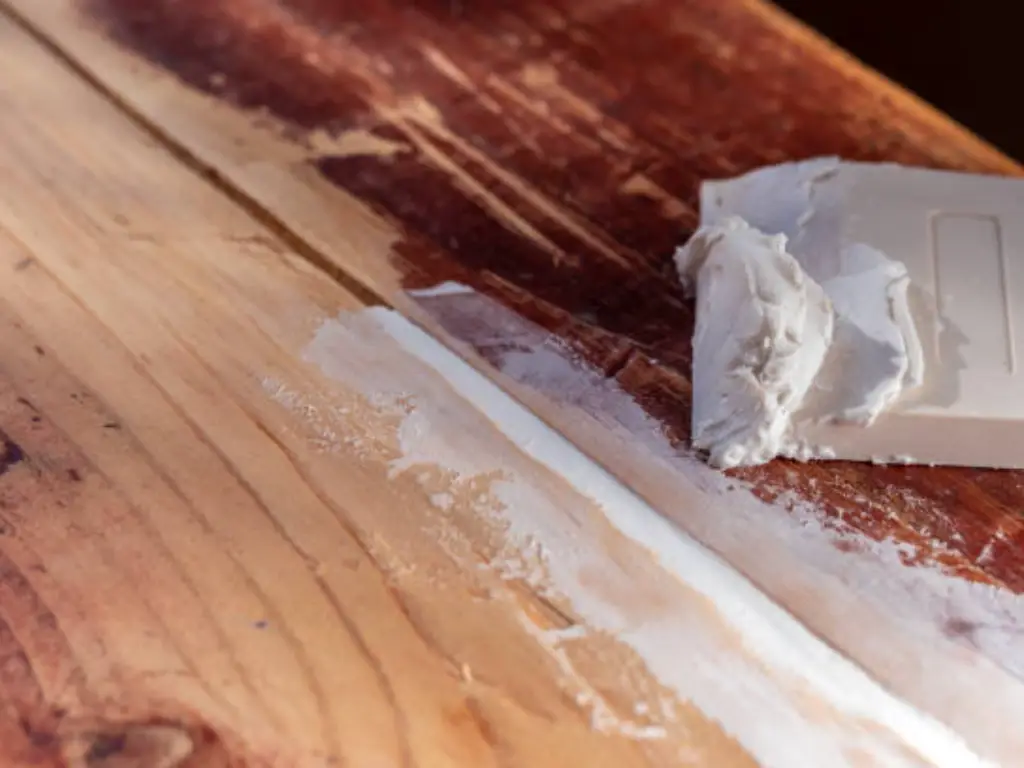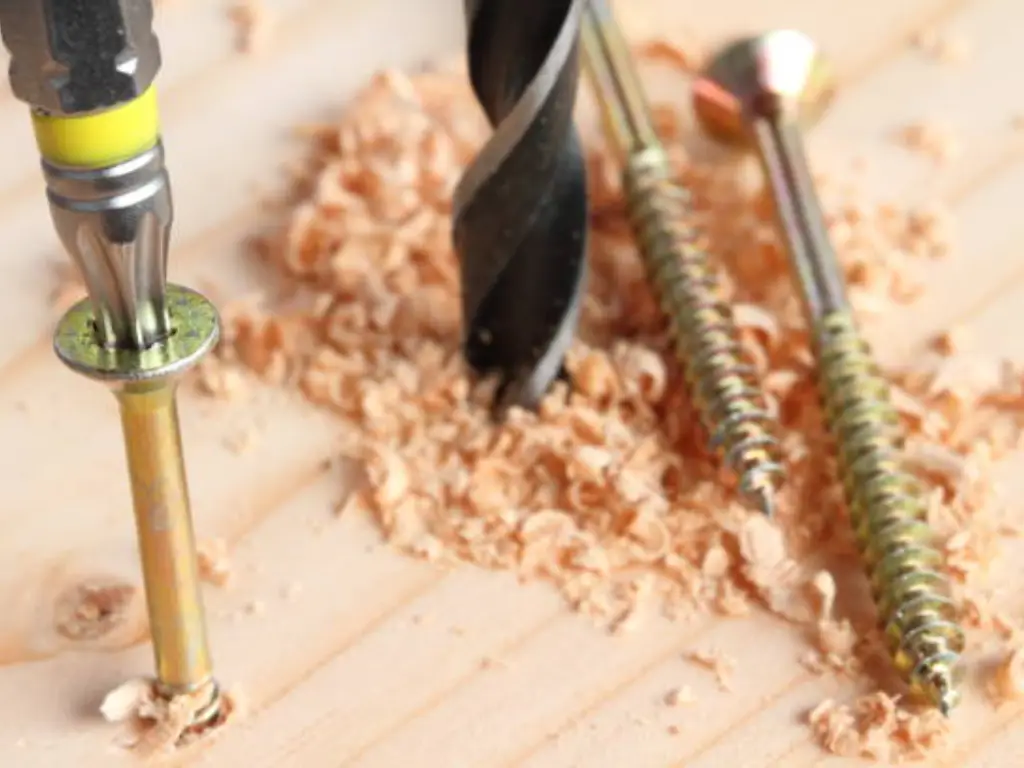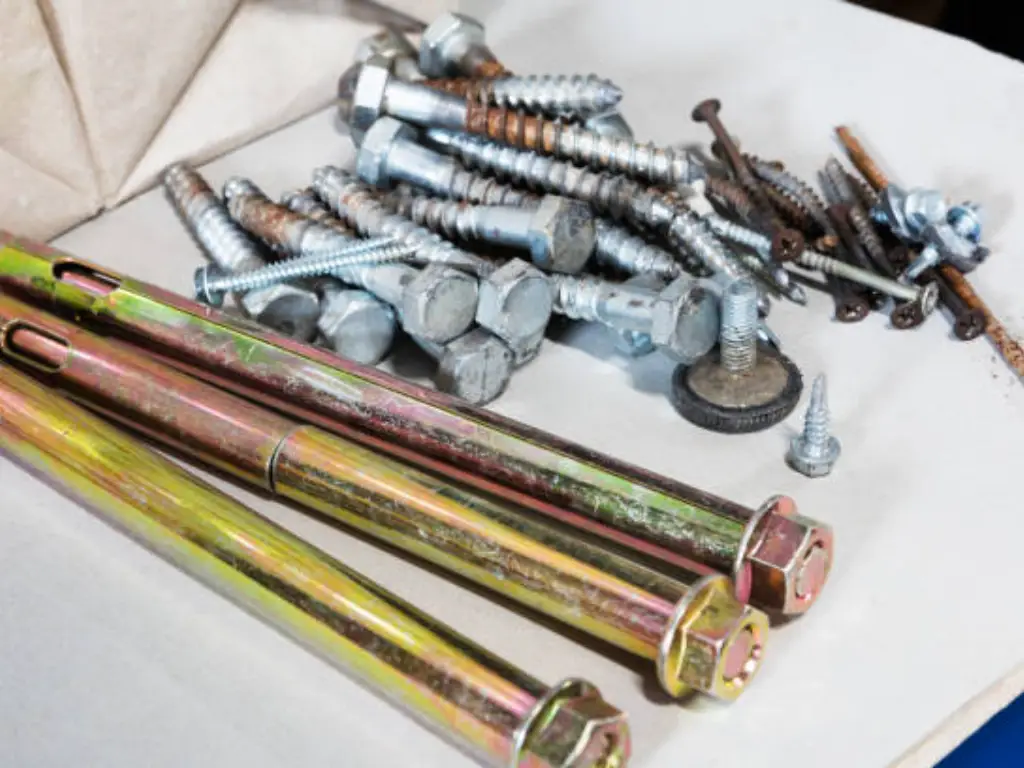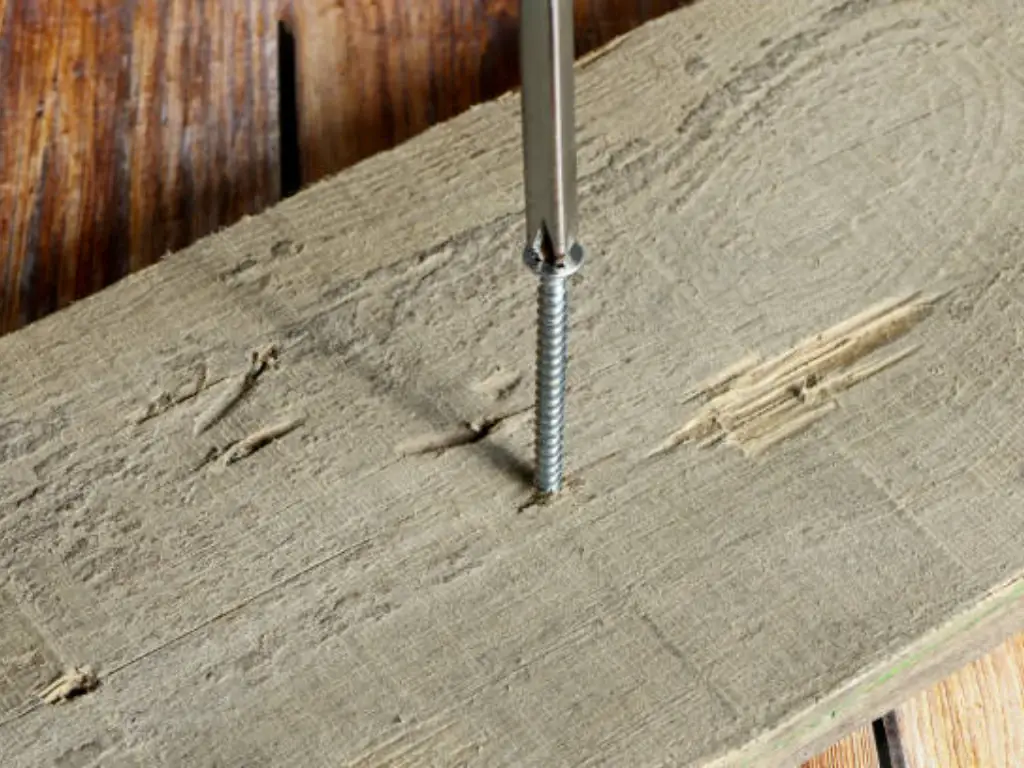Introduction to Wood Filler
Long years spent in the craftsmanship of wood, bonding with the grains and whispers of timber, has given me a unique perspective. I still remember when I first stumbled upon *wood filler*, a product that’s been a part acting in many of my restorative tales. This wealth, this compendium of adhesive and filler concoctions, they have their roles cut out for them. And just like members of an orchestra, where the entire symphony would jam without even one, each kind of filler and glue holds the potential to be a linchpin in your home improvement escapades.
Starting off with wood fillers, they are a savior for dealing with dings, dips, and hollows, those small holes causing larger than life troubles. When used right, they’re more than just a temporary patch – they can revive piece of wood like a Phoenix rising. Even so, their versatility doesn’t stop at surface-level applications. They have more tricks up their sleeves, which we’ll delve into as we proceed. Never feel alone in the face of a stripped screw hole or a dent in your beloved hardwood floor. The wood filler is a friend that’s always ready to lend a hand.
In my experience, wood fillers are like books; they come in many types and all have their quirks and benefits. But here’s a fun fact: Did you know that the term “wood filler” is much like a “family name”? The real names, the specific ones, they’re under this umbrella – much like Solomon under Smith (Abracadabra! Made up a name, but hope you get the idea).

Different Types of Wood Fillers Explained
When it comes to putty, epoxy, and the various other types of wood fillers, there’s a type for every task, each bringing its unique grain to the table (literally, if you’re restoring a table).
Water-Based vs. Solvent-Based Fillers
On the frontline, we have the age-old battle, with Water-based fillers squaring off against Solvent-based ones. From my findings, for light, precision-based work, water-based fillers seem like a good idea. They are easy to sand down, they don’t stink up the place, and a little water can help you wash right off the excess. Perfect allies for indoor woodworking where ventilation may be limited. In the other corner, solvent-based fillers are like a pick-up truck – they can handle a heavy load. Ideal for exterior use, they’re the most durable if you are dealing with parts exposed to rough edges of the weather or a humid area.
Ok, laughing a little because that’s useless trivia for me to bring out my water-based filler when my nephews accidentally dent the living room table next time they’re playing around.
Epoxy Wood Fillers and Their Strengths
Next up is the epoxy wood filler, in my years of experience, these have always been a reliable partner for structural repairs. If I were to think of a wood filler capable of biting off more than it could chew – it’s epoxy. Screw into an epoxy filler? Well, you’re getting ahead now. Hush, we’ll get there soon enough.
But for now, just like to think of epoxy resin as a two-part harmony. There’s a resin and a hardener. Once they mingle, they gel up to give you a solid wood filler. If you’re thinking about filling a gap, a hole, a gash – think epoxy wood fillers. Rigidity, durability, stain-ability – they score well on all these fronts.
Wood Filler Vs Wood Glue: Understanding the Differences
The curious case of wood glue and wood filler has caused quite a conundrum for home improvement rookies and seasoned woodworkers alike. As an experienced mender, I can assure you that even though they come from similar backgrounds, their applications are as distinct as their consistencies.
When to Use Each Product
Without a doubt, wood glue, the PVA or Polyvinyl Acetate, excels in bonding pieces of wood together. As a matter of fact, it creates a bond stronger than wood itself – fascinating isn’t it? But when it comes to filling in gaps, covering up small holes or taking on rough edges, this adhesive falls short on its face. That’s where wood fillers – with types like the two-part epoxy resin ones and Elmer’s and the Bondo wood filler kind show their colors.
Limitations of Wood Filler and Wood Glue
Wood glue is indeed a quick fix, it’s like the Band-Aid of woodworking. It’s important to remember it contains water, which the wood absorbs and causes a slight swell. For particle-boards and other non-solid wood, that could be a challenge. Glue, you see, doesn’t hold up the structural integrity as wood fillers would.
Wood filler, on the other hand, isn’t your ‘go-to’ for bonding two pieces of wood. Despite its multiple uses, from covering a hinge mortise to hiding an unsightly nail dent, using wood filler as a joining adhesive might not be such a good idea.

Can You Screw Into Wood Filler? A Detailed Exploration
Delving into the nuances of fastening screws into wood filler requires a discerning approach that considers an array of critical factors.
Determining the Viability of Screw Retention in Wood Fillers
The key determinant in the viability of inserting screws into wood filler lies in the selection of the appropriate type of wood filler. There exists a myriad of types of fillers, each with unique properties and suitability for various applications. Through personal procurement experience via Amazon, the revelation that the right type of wood filler is pivotal became evident. For instance, epoxy fillers, such as those akin to the esteemed Bondo Wood Filler, exhibit an impressive ability to secure screws firmly post-curing — a phase of utmost importance.
Assessing the Load-Bearing Capability of Fillers
In scenarios where the screw is expected to bear minimal weight, utilizing a screwable wood filler may suffice, regardless of whether it is an epoxy-based compound or a water-based variant. However, the scenario shifts dramatically when the filler is anticipated to support a substantial load. In such cases, a meticulous analysis is warranted to determine the potential for reinforcement and its practicality. This contemplation introduces a plethora of variables reminiscent of traditional woodworking craftsmanship. It is within this context that we must navigate forward, engaging in a comprehensive examination of the intricacies involved in reinforcing wood fillers to accommodate real wood’s structural demands and the screws that may be embedded within.
Influence of Screw Selection on Fixation in Wood Filler
The caliber of screws employed plays a pivotal role in the efficacy of their anchorage within wood putty. Selecting a screw with a thread pattern and gauge optimized for the density and composition of the chosen filler ensures a secure and enduring bond. It is imperative that the screw’s material composition is compatible with the wood filler’s properties to prevent any compromise in structural integrity. Furthermore, screws designed with an anti-corrosive coating enhance the durability of the connection, especially in environments susceptible to moisture. Therefore, judicious selection of the screw type, tailored to the specific characteristics of the wood filler, is essential for a robust and reliable hold.
To further elucidate the practical aspects of screwing into wood filler, the following table has been compiled to provide a clear comparison of various screw types, their characteristics, and their compatibility with different wood filler materials for your reference:
| Screw Type | Characteristics | Compatible Wood Filler Types | Recommended Application |
| Wood Screw | Coarse threads, tapered point | Epoxy, Polyurethane | Heavy-duty, structural projects |
| Sheet Metal Screw | Sharp threads, pointed tip | Epoxy, Solvent-Based | Securing to metal, heavy loads |
| Drywall Screw | Fine threads, sharp point | Water-Based, Solvent-Based | Light fixtures, non-structural |
| Deck Screw | Weather-resistant, coarse threads | Epoxy, Solvent-Based | Outdoor, exposed to elements |
| Machine Screw | Uniform threads, blunt end | Epoxy (with nuts and washers) | Metal or plastic, precise alignment |
Step-by-Step Guide to Screwing Into Wood Filler
The road to screwing into wood filler is less of a highway and more of a scenic route with its fair share of twists and turns. So, let’s navigate this journey step by step.
Preparing the Wood and Filler for Screwing
The first step is akin to laying the foundation of a house – surface preparation. Clean up any loose paint or debris. For a solid wood surface, ensure it’s smooth and dry. Then, select the right type of wood filler for the task. If we’re talking about a stripped screw hole in a high-traffic area, I’d lean towards a two-part epoxy resin. It’s robust and doesn’t shy away from a little heavy-duty action.
Patience is a virtue, especially when it comes to drying wood filler. A rushed job can lead to a weak foundation. Depending on the filler used, drying times can vary. Epoxy wood filler, in particular, requires ample time to set and reach its peak strength.

Drilling a Pilot Hole
Now, onto the drilling. A pilot hole is essential. This step is about precision, not power. Select the right drill bit, slightly smaller than the screw’s diameter. Remember, too big a hole, and you lose grip; too small, and you risk splitting the filler.
Applying the Screw with an Impact Driver
The final act involves an impact driver. Here’s a tip: don’t just jam the screw in. Apply gradual pressure. This ensures that the screw finds its way firmly, without overwhelming the filler.
Reinforcement of Wood Filler for Enhanced Screw Hole Integrity
In the intricate task of reinforcing wood filler for screw support, particularly when addressing the complexities of a stripped screw hole or rejuvenating an aged piece of wood, meticulous attention to detail is paramount.
The strategic incorporation of minuscule, yet robust, pieces of wood, such as wooden match sticks or bamboo skewers, into the filler serves to significantly enhance its structural integrity. This method acts akin to an internal scaffold within the filler, endowing it with augmented strength to securely anchor the screw.
In situations demanding even greater fortitude, alternative reinforcement materials are advisable. The integration of a wooden dowel, or the application of a high-quality bondo wood filler, is instrumental in substantially elevating the repair’s durability.
To achieve an optimal and enduring bond, it is crucial to ensure a seamless amalgamation and thorough drying of both the filler and the reinforcement materials. This process is analogous to the art of baking, where the precise balance of ingredients, their proportions, and adequate baking time converge to create a perfect culinary masterpiece.
Solving Common Problems When Screwing into Wood Filler
In navigating the complexities of ameliorating the prevalent dilemmas posed by the insertion of screws into wood filler, an exhaustive and precise modus operandi is paramount.
Strategies for Mitigating Cracking and Splitting
Woodworkers frequently grapple with the vexing issues of cracking and splitting. To efficaciously circumvent these complications, it is imperative to abstain from applying excessive force, whilst ensuring that the wood filler, such as the reputable Elmer’s Wood Filler or an equivalent that is amenable to screwing, has been allowed to cure thoroughly. In circumstances where slight misalignment or adhesion deficits are present, a judiciously orchestrated retraction of the screw, succeeded by a careful reinsertion, may yield positive outcomes. This process necessitates a scrupulous equilibrium, forestalling disproportionate strain on the applied layer of wood filler.
Tailoring Techniques to Accommodate Wood Varieties
The intrinsic heterogeneity of wood species calls for bespoke treatment strategies. Hardwoods, lauded for their robustness and durability, require a more refined, delicate application of screws to avert potential damage. In contrast, softer woods might permit a less intricate method, yet still necessitate meticulous execution to preserve structural integrity. When engaging with particle board or other engineered substrates, cognizance of their distinct properties, such as susceptibility to moisture and the propensity for degradation due to excessive sanding, is imperative for achieving exemplary results. Ergo, astute recognition and adjustment to the particular requisites of each wood category is quintessential for securing a lasting and durable restoration.

Conclusion: Mastering the Art of Using Wood Filler
In the world of woodworking and home improvement, mastering the use of wood filler, particularly when it comes to screwing into it, is both an art and a science. From choosing the right filler to the intricacies of applying a screw, every step is a dance of precision and patience. As we’ve journeyed through this topic, remember, it’s not just about fixing a hole; it’s about restoring the character and integrity of the wood. With the right knowledge and a bit of practice, you’ll be screwing into wood filler like a seasoned pro, ensuring your woodwork stands the test of time and utility.






